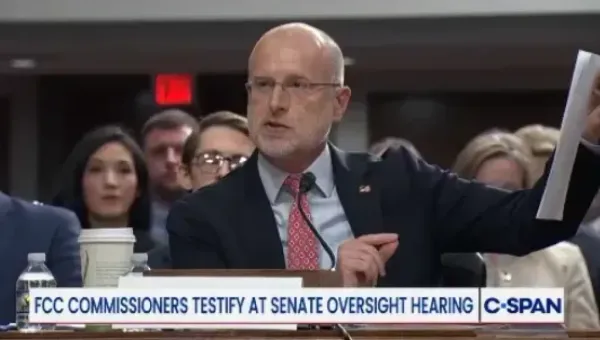Broadband Labels Should Include Practical Applications of Internet Packages: MIT Researchers
The FCC’s broadband label might include the number of movies one can watch at a time with a certain plan.
David B. McGarry

WASHINGTON, September 19, 2022 – The Federal Communications Commission’s upcoming broadband transparency labels should include “interpretive” information that helps consumers understand the practical implications of their internet performance, such as the number of movies they can watch at a time, according to researchers Friday at the Massachusetts Institute of Technology.
As directed by Congress in the Infrastructure, Investment and Jobs Act, the FCC is currently working on a “label” service providers will be required to fulfill that features details of broadband service plans, including monthly price, typical download and upload speeds, latency, packet loss, and other relevant information. The labels, which must be finalized by November, are meant to help consumers make a more informed decision when choosing an internet plan.
Because consumers are often unaware of how aspects of network performance affect the user experience, David Clark and Sara Wedeman of MIT’s Computer Science and Artificial Intelligence Laboratory said Friday at the TPRC 2022 conference that simply displaying technical metrics – e.g., an average upload speed of 20 Megabits per second (Mbps) – is unlikely to facilitate better user decision making.
The pair recommends the FCC adopt and require of service providers the equivalent of a nutritional label’s daily value field: a “Satisfactory Service Label.” Just as the daily value field makes complicated nutritional information actionable for the average consumer, the SSL will clarify how the technical metrics of an internet package affect performance, Clark said.
“One can propose a somewhat simple SSL for download speed by noting that for each simultaneous HD stream, no more than…about 9 mb/s is necessary. One could probably watch 3 HD streams at once over a 25 mb/s service,” said the paper on which Clark and Wedeman’s TPRC presentation was based.
Difficulties in the labeling process
Paroma Sanyal and Divya Goel of the consulting firm Brattle Group also presented a paper on broadband labeling at TPRC. They argued that mandatory labeling will likely lead to lower prices and higher quality internet plans but also presents economic and legal risks if implemented incorrectly. Sanyal said that the standardized labeling regimes often introduce compliance costs and harm innovation, recommending instead a simple, clear system to minimize the emergence of unintended consequences.
Sanyal’s and Goel’s paper – coauthored with the Brattle Goup’s Coleman Bazelon – argues that the FCC’s current guidance doesn’t provide a specific definition of “typical” network performance, leaving much interpretation to broadband providers.
The paper also notes a multitude of technical factors outside the provider’s control that could affect performance. “For fixed broadband factors such as the vintage of equipment on the consumer premises…for mobile broadband, the vintage and type of handsets, weather, and location of the consumer are important,” the paper reads.
“As an illustration, typical speeds in a DC neighborhood may not be the typical speeds in a Baltimore neighborhood, which begs the question of how geographically targeted such labels should be, and, of course, the associated costs,” the paper adds.









Member discussion